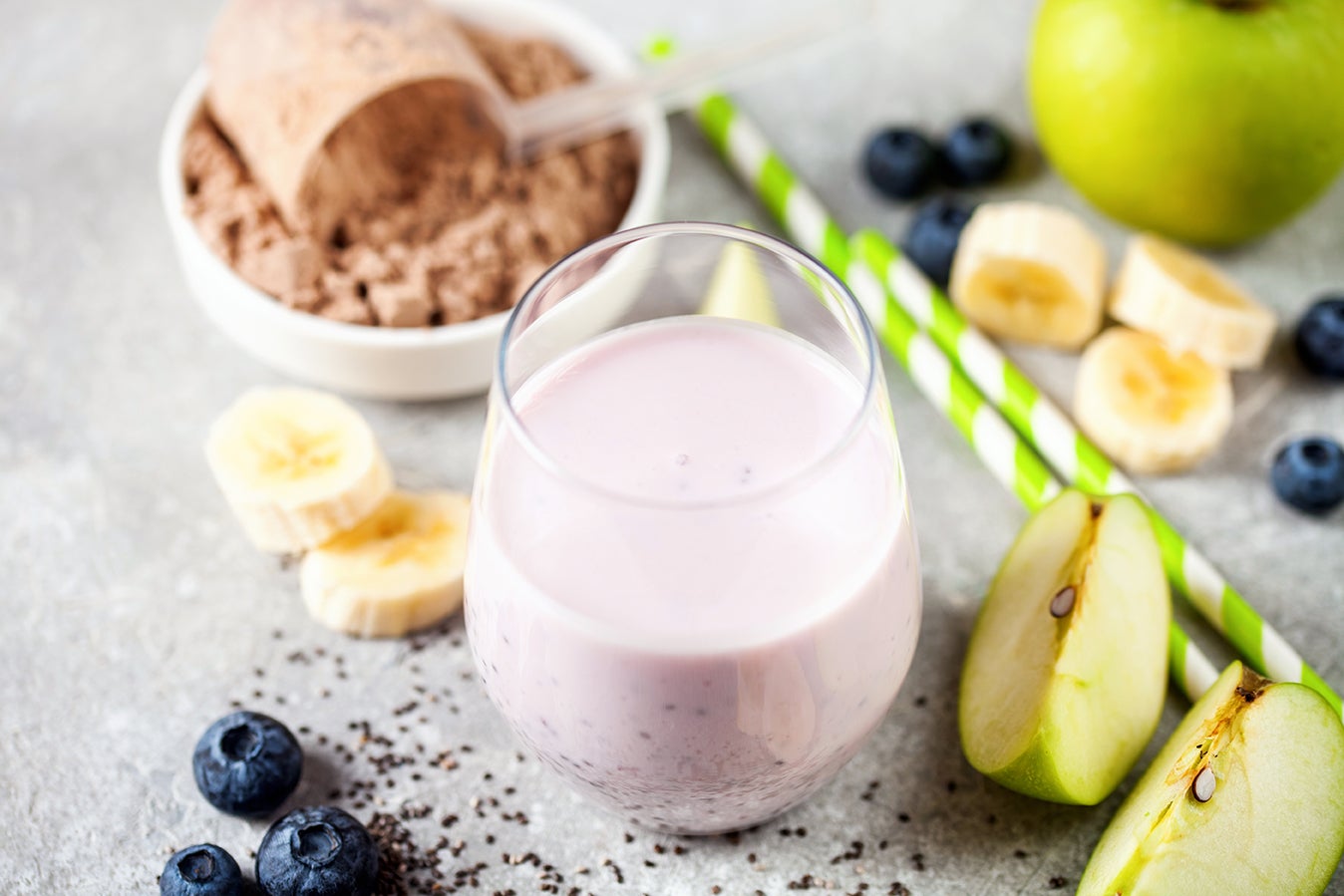The Power of Plant-Based Protein

Plant-based protein is a great way to fuel fitness programs, but there’s a lingering myth that it may not be as effective as the animal-based version. “People don’t think you can be toned and have muscle on your body with plant protein,” says Tim McComsey, RD, fitness trainer, founder of TRYM Fit in Dallas, and plant-food fan. Take one look at him, and you know that notion is a myth.
In fact, research that directly compared animal and plant protein powders found they equally effective in conjunction with strength training. The study, done at the University of Tampa and published in Nutrition Journal, compared whey and rice protein (Oryzatein) powders and found “No detectable differences.” During an 8-week strength training program, both produced equal gains in muscle and performance, loss of body fat, and reduced muscle soreness when consumed after a workout. Those in the study consumed 48 grams of either whey or rice protein daily.
Plant-Based Protein Benefits
For fitness and overall health, there’s more to plant protein than just matching whey or other animal foods. “Plant protein keeps blood more alkaline,” says McComsey, which manifests as better sleep and more energy. “It keeps you more youthful,” he says. “And the more energy you have, the further you’ll walk and the more you can do in a workout.”
The Other Big Myth
Although “plant-based” is sometimes used to describe a diet devoid of animal foods, this isn’t what it means. A base is a foundation, and swapping plant food in place of some animal sources has an alkalizing effect, which can improve energy and overall well-being in as little as a few days. In contrast, meat (especially red and processed meats), alcohol, and coffee have an acidifying effect.
If animal protein is a staple in each of your meals, aim to replace it with plant protein at one or two of those, suggests McComsey, who still eats some animal-based foods, such as eggs, chicken, and turkey. Here are some examples of how he switched to a more plant-based diet:
- Breakfast: Tofu instead of eggs, and oatmeal
- Lunch: Tofu or tempeh instead of poultry, with brown rice.
- Dinner: Eats some animal protein, such as eggs, poultry, or fish, with vegetables.
- Snacks: Shake made with plant protein powder instead of whey.
Related: How to Choose a Plant-Based Protein Powder
Getting Fitness Results
For the best results from workouts, McComsey recommends:
- Get about 1 gram of protein per pound of body weight.
- To significantly improve fitness level and body composition, do weight training and cardio four or five times per week, and three times weekly for maintenance.
- Go high-low intensity for the most effective cardio workouts.
Examples of high-low intensity could be sprinting at your top speed on the straight portion of a track and walking slowly around the curves, for a total of 15 to 20 minutes. Or on a street, sprint from one lamppost to the next, and walk past the next two lampposts. On a treadmill or elliptical machine, vary speed and/or resistance, with 30 seconds at your highest intensity and one or two minutes at low intensity.
Most important, be consistent. “Most people don’t like to work out,” says McComsey, “but if you push yourself enough to see results, you’ll feel better and be more motivated.” Ultimately, regular exercise and a nutritious way of eating should become lifelong habits, but to be realistic, aim to stick with a program for three months—long enough for new habits to develop—and then set a new goal. Start by including workouts in your planned schedule.
Most people tend to exercise too little rather than too much, but it’s also possible to overdo it, so listen to your body. Exhaustion and shrinking muscle mass, despite regular workouts, may be signs of overtraining.
A strong, lean body is a product of both diet and exercise: 80 percent nutrition and 20 percent movement. The better your diet, the more pronounced the benefits of your fitness training.
How to Choose a Plant-Based Protein Powder
“Look at the first three ingredients,” says McComsey. “You want real food sources.” As an example, protein sources might be pea, hemp, brown rice, quinoa, chia, other seeds, amaranth, or other grains. Avoid artificial flavoring and fillers. Per serving, look for:
- About 100 calories
- 15–20 grams of protein
- No more than 5 grams of sugar